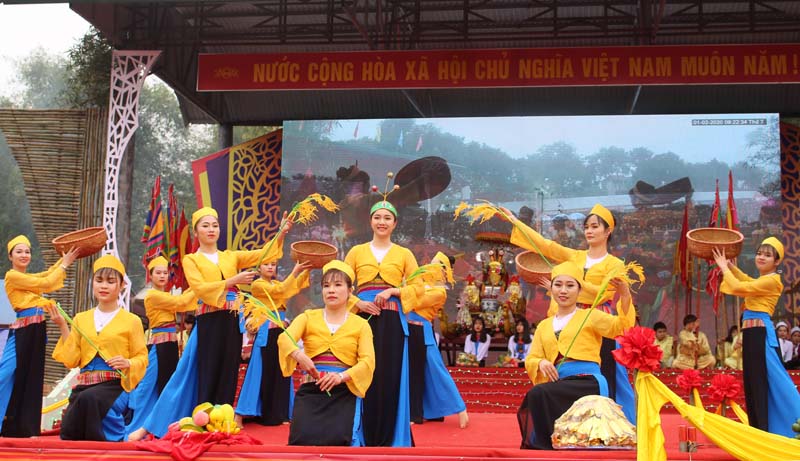


 The folk song is a special spiritual dish,
which is indispensable in the activities of the Khai Ha Festival in Muong Bi in
2020.
The folk song is a special spiritual dish,
which is indispensable in the activities of the Khai Ha Festival in Muong Bi in
2020.
In recent years, along with preserving the cultural identity of Muong ethnic people in general, they have also paid attention to keeping and developing Muong folk songs.
In 2019, together with 2 classes teaching gong lessons for about 60 learners, the district opened a class with the participation of 30 people from the district's highland hamlets and communes to teach Muong folk songs in Chien hamlet, Van Son commune. According to the artist Bui Thi Mien in Phong Phu commune, who directly teaches folk songs, the study is increasingly attracting people of different ages.
Many elderly people also want to participate and follow up to deepen the melodies of the nation and the homeland. In particular, after each course, the learners can promote the knowledge and skills they learned to bring the folk songs closer to life, improving the quality of cultural and artistic movements at the grassroots level and the enjoyment of the spiritual culture of the people.
In addition to the artisan Bui Thi Mien, there are dozens of knowledgeable and dedicated artisans in the district, contributing to conserving and preserving folk songs.
In recent years, the awareness of the value of Muong folk in particular and the cultural identity of Muong ethnic people in general have been aroused in the community. In 2017, the first club preserving the national cultural identity was launched in Ngoi hamlet, Suoi Hoa commune. In 2019, another more club preserving the national cultural identity was established in Dinh hamlet, Man Duc town. The clubs have been promoting gong teaching, folk tunes, folk dances, Doi singing, Thuong Rang and Bo Meng singing, and maintaining the costumes of the ethnic people, preserving their identities through spoken words.
Determining not to let Muong folk songs fade away, the district has focused on other practical and specific solutions such as coordinating with the Department of Education and Training to open the classes teaching folk songs within the students' extra-curricular activities. Thereby, they have helped them understand the value of folk songs and consciously preserve folk songs. They have been organizing the festive activities to enrich the cultural and spiritual life of the people as well as to introduce the cultural identity to tourists from all directions. They have also regularly been organizing cultural performances and cultural exchanges of the communal clusters to encourage and evaluate the quality of the mass cultural and artistic movements. As a result, the folk tunes such as Sac Bua, Thuong Rang and Bo Meng singing, which have been gradually popularized in the life of Muong Bi people.